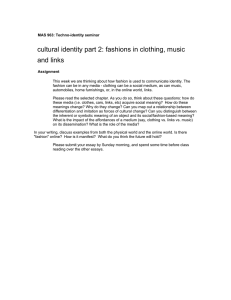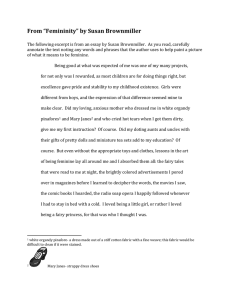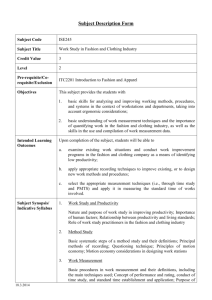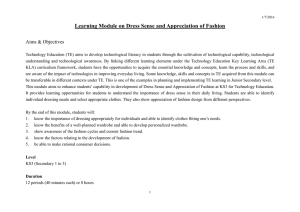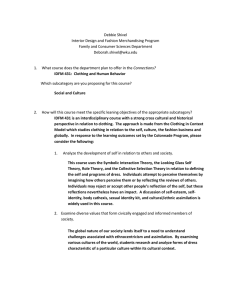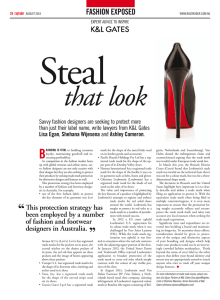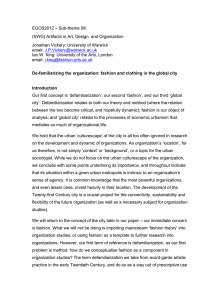Fashioning Gender: Contexts and Approaches
advertisement
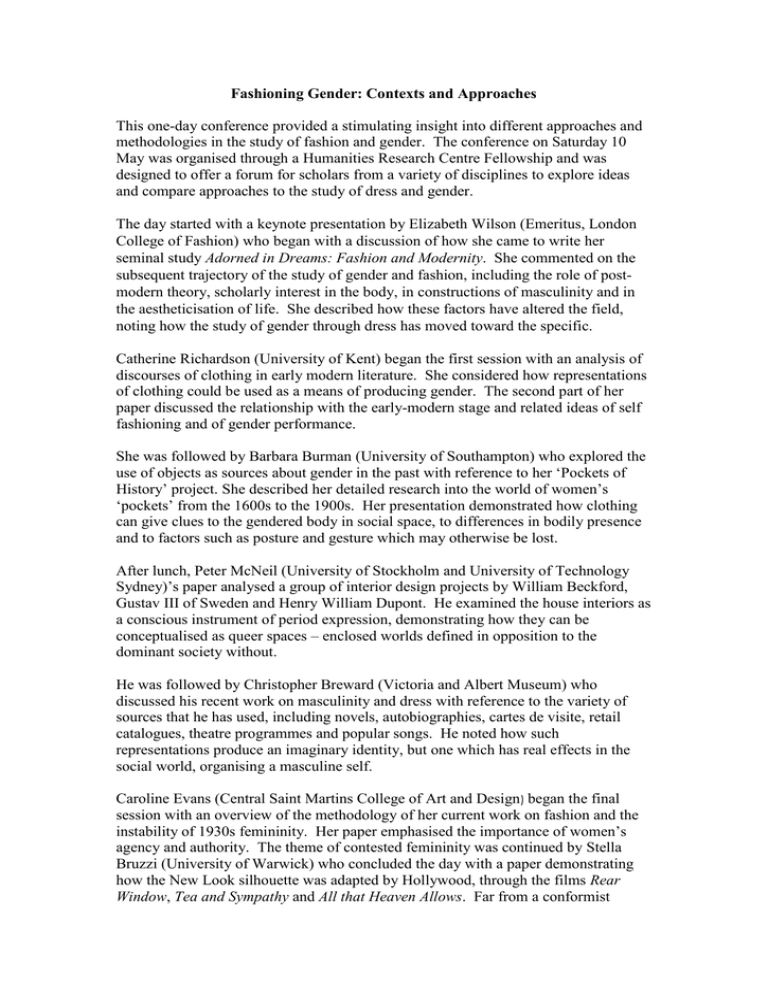
Fashioning Gender: Contexts and Approaches This one-day conference provided a stimulating insight into different approaches and methodologies in the study of fashion and gender. The conference on Saturday 10 May was organised through a Humanities Research Centre Fellowship and was designed to offer a forum for scholars from a variety of disciplines to explore ideas and compare approaches to the study of dress and gender. The day started with a keynote presentation by Elizabeth Wilson (Emeritus, London College of Fashion) who began with a discussion of how she came to write her seminal study Adorned in Dreams: Fashion and Modernity. She commented on the subsequent trajectory of the study of gender and fashion, including the role of postmodern theory, scholarly interest in the body, in constructions of masculinity and in the aestheticisation of life. She described how these factors have altered the field, noting how the study of gender through dress has moved toward the specific. Catherine Richardson (University of Kent) began the first session with an analysis of discourses of clothing in early modern literature. She considered how representations of clothing could be used as a means of producing gender. The second part of her paper discussed the relationship with the early-modern stage and related ideas of self fashioning and of gender performance. She was followed by Barbara Burman (University of Southampton) who explored the use of objects as sources about gender in the past with reference to her ‘Pockets of History’ project. She described her detailed research into the world of women’s ‘pockets’ from the 1600s to the 1900s. Her presentation demonstrated how clothing can give clues to the gendered body in social space, to differences in bodily presence and to factors such as posture and gesture which may otherwise be lost. After lunch, Peter McNeil (University of Stockholm and University of Technology Sydney)’s paper analysed a group of interior design projects by William Beckford, Gustav III of Sweden and Henry William Dupont. He examined the house interiors as a conscious instrument of period expression, demonstrating how they can be conceptualised as queer spaces – enclosed worlds defined in opposition to the dominant society without. He was followed by Christopher Breward (Victoria and Albert Museum) who discussed his recent work on masculinity and dress with reference to the variety of sources that he has used, including novels, autobiographies, cartes de visite, retail catalogues, theatre programmes and popular songs. He noted how such representations produce an imaginary identity, but one which has real effects in the social world, organising a masculine self. Caroline Evans (Central Saint Martins College of Art and Design) began the final session with an overview of the methodology of her current work on fashion and the instability of 1930s femininity. Her paper emphasised the importance of women’s agency and authority. The theme of contested femininity was continued by Stella Bruzzi (University of Warwick) who concluded the day with a paper demonstrating how the New Look silhouette was adapted by Hollywood, through the films Rear Window, Tea and Sympathy and All that Heaven Allows. Far from a conformist femininity, she contended that what was suggested was discontent and an identity imposed. Giorgio Riello (University of Warwick) concluded the conference, commenting in his closing remarks on the diversity of methods and approaches explored during the day. The conference was well attended and provided an inspiring and enjoyable day of discussion and debate, demonstrating the breadth of research and interest in this area.
